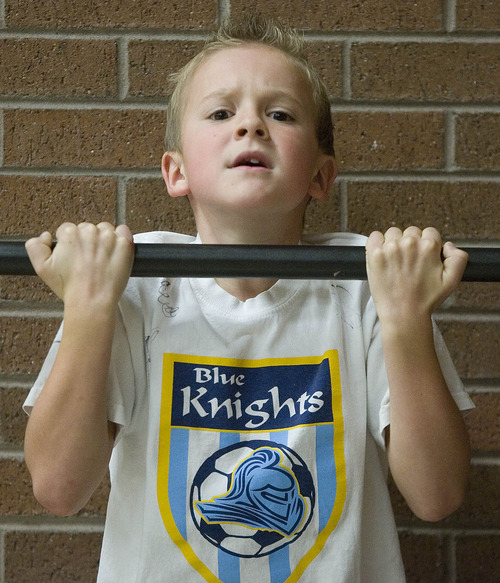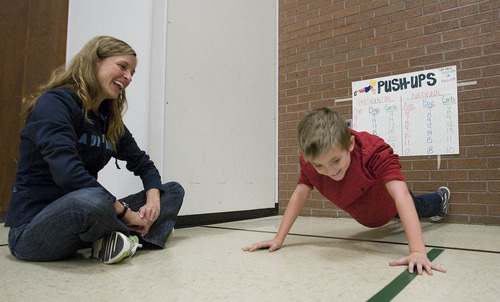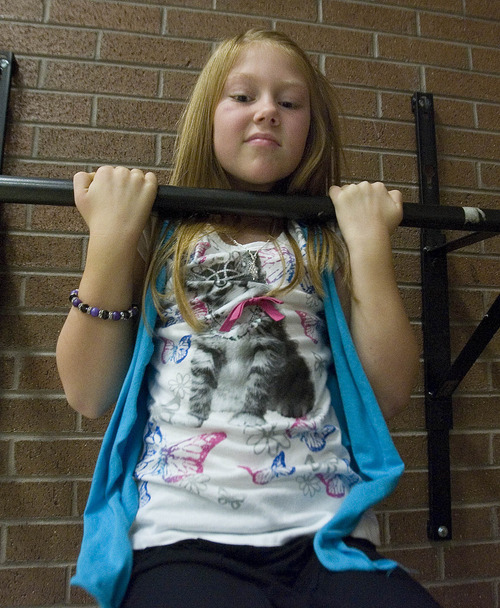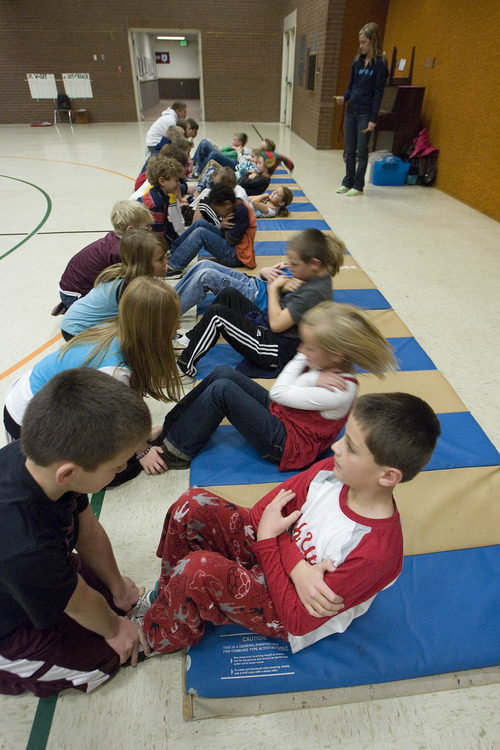This is an archived article that was published on sltrib.com in 2011, and information in the article may be outdated. It is provided only for personal research purposes and may not be reprinted.
Sandy • Gabriel Curtis, 9, sits in the gym at Park Lane Elementary with his feet pressed against a wooden box and his fingertips reaching in front of him as far as they can go. He doesn't quite meet the mark for the sit-and-reach portion of the President's Challenge.
"It's hard for me because I have longer legs," the third-grader explains. But he decides to take a break to stretch and then try again. He's sure he can hit the goal.
Perseverance and practice are two of the key ingredients that have made Park Lane a superpower in the annual fitness contest presented by the President's Council on Fitness, Sports and Nutrition. The school, which has about 560 students, recently won its 15th state championship for schools its size. It has the highest portion of students scoring in the 85th percentile in five fitness categories: sit-ups, pull-ups or push-ups, endurance run, shuttle run and the sit-and-reach.
The wins have been consecutive save for one year: 2005-06. Navy blue banners for each championship hang from the gym's ceiling.
"It has almost become a part of the culture. It's something that we do," says principal Karen Medlin. "It makes [students] more aware of being physically fit. It gives them the chance to have a high goal and strive for it."
The other secret to Park Lane's success is parents. Parent volunteers run the entire program, and they offer an opportunity several times during the year for students to meet the fitness goals, which vary for boys and girls by age. For the outdoor run, parents test students twice in the fall and twice in the spring. One parent will be a "pacer," running with students at the desired speed, such as an eight-minute mile.
"We're kind of die-hards," says Annie Cheney, the PTA leader who has directed the fitness challenge for the past three years. "If you only tested once, your chances of winning are slim. Most kids need a couple of tries to get the times and scores they need. It gives them that drive."
Gabriel, who loves to play football, says physical activity helps kids like him stay healthy, too. "If they sit at home and play video games and eat junk food they won't get as much energy," he says.
In fact, new research shows that exercise, particularly during the school day, can boost students' ability to concentrate, says Frank Wojtech, health and physical education specialist at the State Office of Education. Last summer, John Ratey, a professor at Harvard Medical School and author of Spark: The Revolutionary New Science of Exercise and the Brain, spoke to a gathering of Utah teachers.
"We're finding out there's a connection between physical activity and brain function," Wojtech says. "Physical activity actually prepares students to learn."
Wojtech says the state office encourages schools to participate in fitness challenges such as the president's, but the programs are voluntary.
"It gives students something to work towards individually," he says. "I think kids, especially at the elementary level, enjoy being part of that."
Maddy Olson, a Park Lane third-grader, says she feels "happy" when she beats her fitness goals. Her favorite activity is running, and she enjoys after-school runs with her mom. She also plays soccer.
"[Exercise] can help you get stronger," she says, "and it's good for your body."











